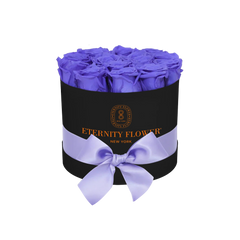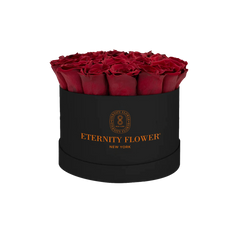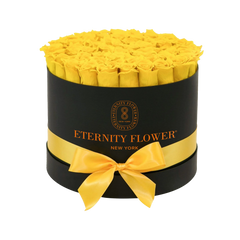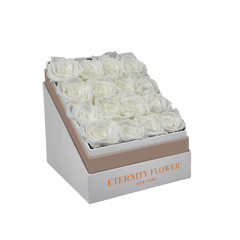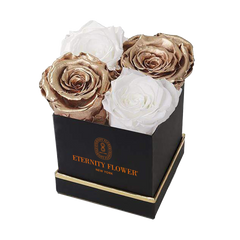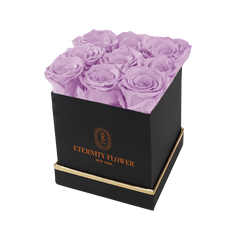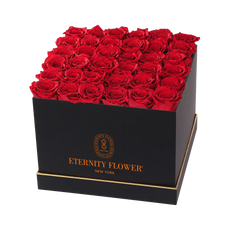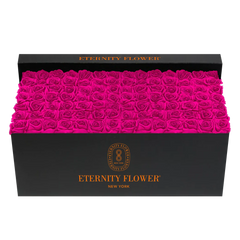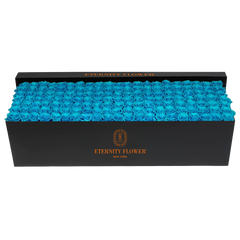You're about to go on a flower trip like no other! Enter the beautiful world of flowers that start with I as we look at 20 stunning blooms that will captivate your senses and make you want to start growing.
Each flower on this list, from the bright Impatiens to the classy Italian Aster, adds its own special beauty and charm to the garden. Put on your gardening gloves and get ready to be wowed by these beautiful flowers that are ready to make your yard look better.
1. Impatiens

- Flower Type: Annual/biennial flowering plant.
- Growing Zones: Typically zones 10-11 as perennials, but widely grown as annuals in cooler climates.
- Origin: Native to the eastern and southern parts of Africa.
- Color: Wide range including white, pink, red, orange, and purple.
Impatiens are popular bedding plants known for their bright, cheerful flowers and ability to grow in shady areas where many other flowers struggle. They are ideal for adding color to garden borders, window boxes, and container gardens.
Impatiens are relatively easy to grow, preferring moist, well-drained soil and partial to full shade. They bloom continuously from spring until the first frost, providing a long-lasting display of color.
2. Iris

- Flower Type: Perennial flowering plants.
- Growing Zones: Zones 3-9, depending on the species.
- Origin: Diverse origins across Europe, the Middle East, North Africa, Asia, and North America.
- Color: Includes a broad spectrum of colors such as blue, purple, white, yellow, orange, pink, and even bicolor variations.
Iris plants are admired for their striking flowers and sword-like foliage, making them a favorite among gardeners for both landscapes and cut flower arrangements. The genus Iris encompasses a wide variety of species, each adapted to different environmental conditions, from water-loving marsh irises to drought-tolerant desert types. Irises generally prefer well-drained soil and a position in full sun or partial shade. Their bloom time varies by species from early spring to early summer, adding elegance and color to gardens when many other flowers are just starting to emerge.
Read More: 25 Rarest Flower in The World With Stories to Tell
3. Ice Plant

- Flower Type: Perennial succulent, annual in cooler climates.
- Growing Zones: Zones 6-10, depending on the species.
- Origin: Native to South Africa.
- Color: Brightly colored flowers in shades of pink, purple, yellow, and orange.
The Ice Plant is a drought-tolerant succulent known for its vibrant daisy-like flowers and fleshy, water-storing leaves which can appear to sparkle like ice crystals in the sunlight. This plant is an excellent choice for rock gardens, ground cover, and xeriscaping due to its low maintenance needs and ability to thrive in poor, dry soils.
Ice plants prefer full sun and well-drained soil. They are particularly effective at reducing erosion on slopes and are widely used in coastal and desert garden designs for their adaptability and colorful blooms.
4. Indian Blanket

- Flower Type: Annual or perennial flowering plant.
- Growing Zones: Zones 3-10.
- Origin: Native to the central United States and northern Mexico.
- Color: Vibrant red, orange, and yellow with a pattern that resembles a blanket; hence the name.
Indian Blanket, also known as Firewheel, is a hardy, drought-tolerant plant that thrives in full sun and well-drained soil. It is celebrated for its bold, bright flowers that bloom from early summer to fall, offering a long season of color.
This plant is ideal for wildflower gardens, borders, and meadows, attracting butterflies and other pollinators. Its resilience and easy care make it a popular choice for gardeners looking to add a splash of color to their landscapes with minimal effort.
5. Indigofera

- Flower Type: Shrubs or subshrubs.
- Growing Zones: Zones 6-9, depending on the species.
- Origin: Widely distributed across tropical and subtropical regions of the world, with some species in temperate zones.
- Color: Pink, purple, or white flowers, often arranged in racemes.
Indigofera is a diverse genus that includes several species valued for their attractive foliage and cascading clusters of pea-like flowers. These plants are often used in gardens for ornamental purposes, as groundcovers, or for stabilizing soil in sunny areas.
They prefer full sun to partial shade and well-drained soil. Some species of Indigofera are also historically significant for producing natural indigo dye, though this practice is less common today with the advent of synthetic dyes.
6. Iberis (Candytuft)

- Flower Type: Evergreen perennial or annual plants.
- Growing Zones: Zones 3-9.
- Origin: Native to Europe and the Mediterranean region.
- Color: White is most common, but there are varieties with pink or lavender flowers.
Iberis, or Candytuft, is a low-growing, bushy plant known for its beautiful clusters of flowers that bloom in early spring to late summer, depending on the variety. It's perfect for rock gardens, borders, and as a ground cover, creating a stunning carpet of color.
Candytuft thrives in full sun to partial shade and prefers well-drained soil. Its easy care and ability to attract butterflies make it a delightful addition to any garden, offering both aesthetic appeal and ecological benefits.
Read More: Poisonous Flowers for Cats: A Guide to Feline-Safe Gardening
7. Ipomoea (Morning Glory)

- Flower Type: Mostly annual vines, some are perennials.
- Growing Zones: Widely grown as annuals; perennial zones vary by species.
- Origin: Diverse origins, with species native to tropical and subtropical regions worldwide.
- Color: Encompasses a wide range including blue, purple, pink, red, and white.
Morning Glory, known for its vibrant, trumpet-shaped flowers, is a fast-growing vine that can add beauty and coverage to fences, trellises, and walls. The flowers typically open in the morning and close by the afternoon, hence the name.
These plants prefer full sun and well-drained soil. While they are easy to grow and can quickly cover large areas, some species are considered invasive in certain regions. Morning Glories are celebrated for their lush foliage and stunning blooms that attract bees and hummingbirds.
8. Ixia (Corn Lily)

- Flower Type: Bulbous plants.
- Growing Zones: Best grown in zones 8-10.
- Origin: Native to South Africa.
- Color: Flowers in shades of white, yellow, pink, purple, and red.
Ixia, or Corn Lily, produces delicate star-shaped flowers on slender stems, creating an elegant display in spring and early summer. They thrive in sunny locations with well-drained soil and are perfect for adding a splash of color to borders, rock gardens, or container plantings. Ixia bulbs should be planted in the fall for spring blooming.
Though not as widely known as other bulbs, they offer a unique beauty with their varied and vibrant colors. In cooler climates, they can be grown as annuals or the bulbs can be lifted and stored over winter.
9. Incarvillea (Hardy Gloxinia)

- Flower Type: Perennial plants.
- Growing Zones: Zones 5-9.
- Origin: Native to Central and East Asia.
- Color: Typically shades of pink and white.
Incarvillea, also known as Hardy Gloxinia, boasts trumpet-shaped flowers that resemble those of the tropical Gloxinia but is much more cold-tolerant. These perennials are valued for their large, showy blooms and ability to thrive in part shade, making them a great addition to woodland gardens, borders, or as a striking focal point.
Incarvilleas prefer well-drained soil and do not like to be overly wet. They can provide a tropical look to temperate gardens without the need for a greenhouse, blooming in late spring to early summer and sometimes again in the fall.
10. Iochroma

- Flower Type: Shrubs or small trees.
- Growing Zones: Zones 9-11.
- Origin: Native to Central and South America.
- Color: Vibrant hues of blue, purple, pink, or red.
Iochroma is a genus of flowering plants known for its stunning, tubular flowers and attractive foliage. These plants are often grown as ornamentals in tropical and subtropical gardens for their exotic appearance and ability to attract hummingbirds.
They prefer full sun to partial shade and well-drained soil. While they are relatively low-maintenance, they may require protection from frost in cooler climates. Iochroma species vary in size, with some growing as small shrubs and others as small trees, adding vertical interest to garden landscapes.
11. Ismene (Peruvian Daffodil)

- Flower Type: Bulbous plants.
- Growing Zones: Zones 8-11.
- Origin: Native to South America, particularly Peru.
- Color: White, with a prominent trumpet-shaped corona.
Ismene, commonly known as the Peruvian Daffodil or Spider Lily, is a bulbous plant prized for its large, fragrant flowers that resemble traditional daffodils. These plants are often grown in gardens or as potted specimens for their striking beauty and pleasant fragrance. Ismene bulbs should be planted in well-drained soil in full sun to partial shade.
They typically bloom in late spring to early summer, producing clusters of elegant white flowers that can add elegance and charm to garden beds, borders, or containers.
Read More: 5 Simple Steps to Create Large Flower Arrangements with Tips and Tricks
12. Illicium (Star Anise)

- Flower Type: Perennial herbaceous plants.
- Growing Zones: Zones 4-8.
- Origin: Native to Europe and Asia.
- Color: Yellow.
Inula, commonly known as Elecampane, is a tall perennial herb prized for its medicinal properties and bright yellow, daisy-like flowers. It has a long history of use in traditional herbal medicine for respiratory and digestive ailments. In the garden, Elecampane adds vertical interest with its tall stems and cheerful blooms, attracting pollinators such as bees and butterflies. It prefers full sun to partial shade and well-drained soil. While primarily grown for its medicinal qualities, Elecampane can also be a charming addition to cottage gardens or wildflower meadows, providing both beauty and utility.
13. Inula (Elecampane)

- Flower Type: Perennial herbaceous plants.
- Growing Zones: Zones 4-8.
- Origin: Native to Europe and Asia.
- Color: Yellow.
Inula, commonly known as Elecampane, is a tall perennial herb prized for its medicinal properties and bright yellow, daisy-like flowers. It has a long history of use in traditional herbal medicine for respiratory and digestive ailments. In the garden, Elecampane adds vertical interest with its tall stems and cheerful blooms, attracting pollinators such as bees and butterflies.
It prefers full sun to partial shade and well-drained soil. While primarily grown for its medicinal qualities, Elecampane can also be a charming addition to cottage gardens or wildflower meadows, providing both beauty and utility.
14. Iresine (Bloodleaf)

- Flower Type: Herbaceous perennial plants.
- Growing Zones: Zones 9-11.
- Origin: Native to tropical regions of the Americas.
- Color: Foliage varies from green to vibrant shades of red, pink, or purple.
Iresine, commonly known as Bloodleaf or Chicken Gizzard, is a genus of herbaceous plants valued for their colorful foliage rather than their flowers. These plants are grown for their striking leaves, which range from green to shades of red, pink, or purple, adding a bold splash of color to gardens and landscapes.
They are often used as bedding plants, borders, or in container gardens for their ornamental appeal. Iresine prefers full sun to partial shade and well-drained soil.
15. Ipheion (Spring Starflower)

- Flower Type: Bulbous plants.
- Growing Zones: Zones 6-9.
- Origin: Native to South America.
- Color: White, blue, or lavender flowers.
Ipheion, commonly known as Spring Starflower or Spring Star, is a charming bulbous plant prized for its delicate star-shaped flowers and sweet fragrance. These plants bloom in early spring, often before many other flowers, heralding the arrival of the new season.
They are excellent for naturalizing in lawns, rock gardens, or woodland settings. Ipheion prefers well-drained soil and full sun to partial shade. Once established, these bulbs can multiply rapidly, forming attractive clumps of flowers that bring joy to gardeners year after year.
16. Iris reticulata (Netted Iris)

- Flower Type: Bulbous perennial plant.
- Growing Zones: Zones 5-9.
- Origin: Native to the Caucasus, Turkey, Iraq, and Iran.
- Color: Various shades of blue, purple, and occasionally yellow or white.
Iris reticulata, commonly known as Netted Iris, is a petite but stunning bulbous iris species. It is prized for its early spring blooms, often among the first to appear in the garden after winter. The flowers feature intricate patterns and vibrant colors, making them a delightful sight in rock gardens, borders, or containers. Netted Iris prefers well-drained soil and full sun to partial shade. It is relatively low-maintenance once established, naturalizing easily and multiplying over time. These charming irises bring an elegant touch to early spring landscapes, providing a welcome burst of color and beauty.
17. Inga (Ice Cream Bean Flower)

- Flower Type: Perennial tree or shrub.
- Growing Zones: Zones 10-12.
- Origin: Native to tropical regions of Central and South America.
- Color: Creamy white to pale yellow.
Inga, commonly known as Ice Cream Bean, is a genus of flowering trees and shrubs prized for their sweet and tasty edible fruit. While the flowers themselves are not particularly showy, they are fragrant and attract pollinators. Inga trees are often grown for their fruit production, which resembles elongated bean pods containing a sweet pulp that tastes similar to vanilla ice cream, hence the name. They are also valued for their nitrogen-fixing properties, making them beneficial for soil health and fertility. Inga trees prefer tropical climates with well-drained soil and ample moisture. While primarily grown for their fruit, the flowers add to the overall beauty and appeal of these versatile trees.
18. Idesia

- Flower Type: Deciduous tree.
- Growing Zones: Zones 6-8.
- Origin: Native to eastern Asia, particularly China.
- Color: Small, inconspicuous greenish-yellow flowers.
Idesia is a deciduous tree known for its attractive foliage and ornamental qualities. While the flowers are not particularly showy, they are followed by clusters of red berries that add interest to the tree in late summer and fall. Idesia trees are valued for their tolerance to a wide range of soil types and conditions, making them adaptable to various landscapes. They prefer full sun to partial shade and regular watering. In addition to its ornamental value, Idesia trees are also cultivated for their wood, which is used in woodworking and furniture making.
19. Ipomopsis (Standing Cypress)

- Flower Type: Biennial or short-lived perennial.
- Growing Zones: Zones 6-9.
- Origin: Native to North America.
- Color: Bright red, pink, or white flowers.
Ipomopsis, commonly known as Standing Cypress, is a striking wildflower native to North America. It is characterized by its tall, slender spikes of tubular flowers that attract hummingbirds and butterflies. Standing Cypress blooms from late spring to early summer, adding vertical interest to meadows, prairies, and wildflower gardens. While it is typically biennial, it can self-seed and naturalize in favorable conditions. Standing Cypress prefers full sun and well-drained soil. It is relatively low-maintenance once established, making it a popular choice for native plant enthusiasts and wildflower enthusiasts looking to support local ecosystems and wildlife.
20. Italian Aster

- Flower Type: Perennial herbaceous plant.
- Growing Zones: Zones 4-9.
- Origin: Native to Europe.
- Color: Various colors including purple, blue, pink, and white.
Italian Aster is a charming perennial herbaceous plant valued for its profusion of daisy-like flowers and long-lasting blooms. It is a versatile plant, suitable for borders, rock gardens, and container plantings. Italian Aster prefers full sun and well-drained soil. It blooms from late spring to early fall, providing a continuous display of color in the garden.
While it requires regular watering, Italian Aster is relatively low-maintenance and easy to grow. It attracts pollinators such as bees and butterflies, adding life and movement to the garden. Overall, Italian Aster is a delightful addition to any landscape, offering beauty, color, and charm throughout the growing season.
Conclusion
This flower tour of the interesting world of Flowers That Start with I shows a wide range of blooms that will interest farmers and nature lovers alike. These flowers will not only make your garden look better, but they will also provide a safe haven for pollinators, giving your outdoor area more color and life. Get your hands dirty and make your garden a blooming paradise!






